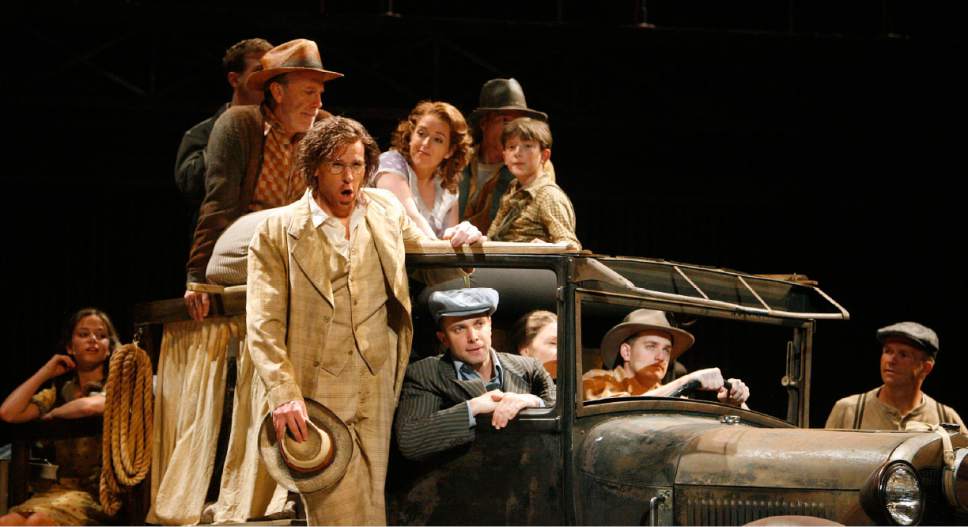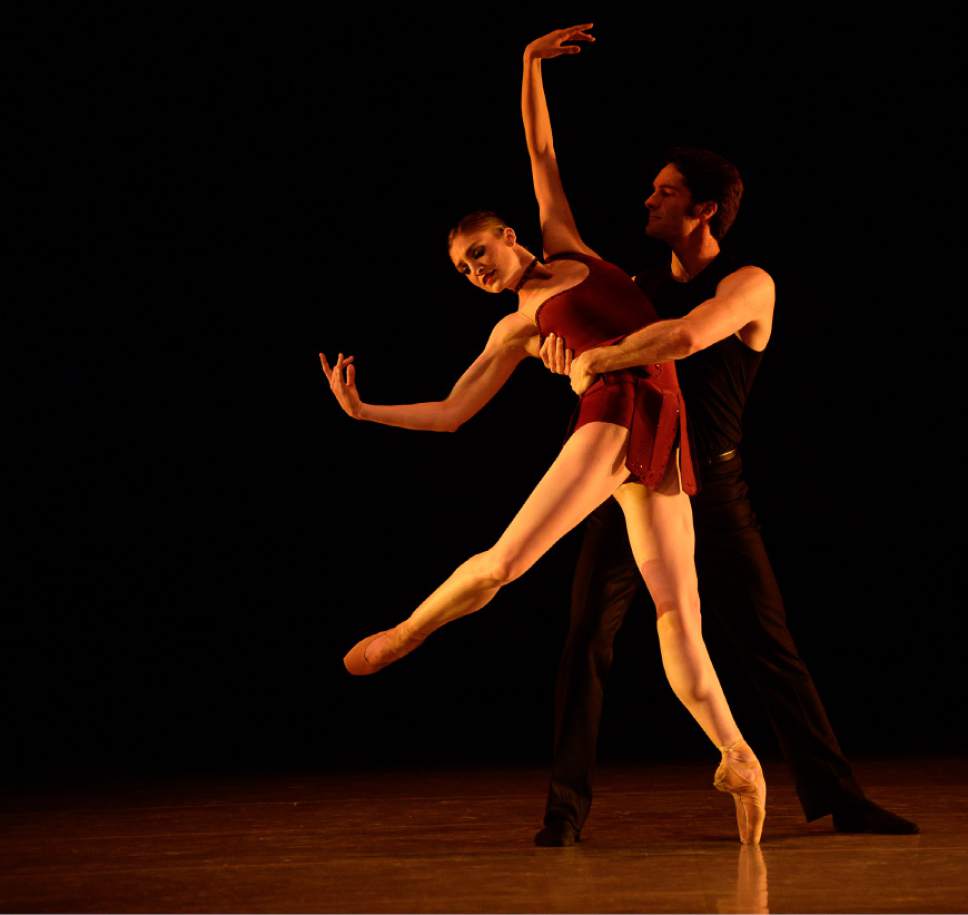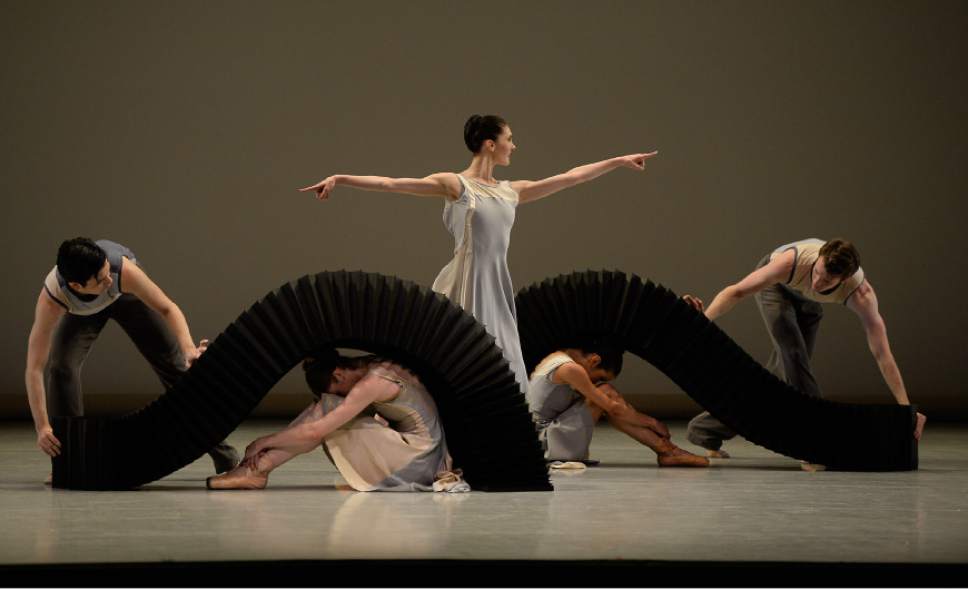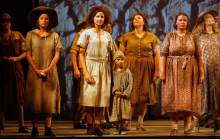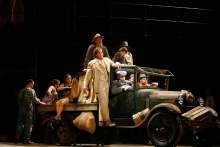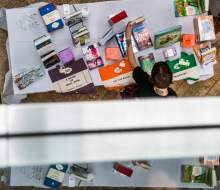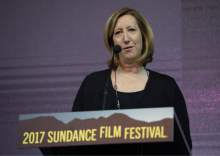This is an archived article that was published on sltrib.com in 2017, and information in the article may be outdated. It is provided only for personal research purposes and may not be reprinted.
Editor's note • Arts leaders nationwide are reacting Thursday to President Donald Trump's 2018 fiscal year budget proposal that would eliminate the National Endowment for the Arts and the National Endowment for the Humanities, as well as the Corporation for Public Broadcasting. Here is a reposting of Tribune reporting from last month about the role of NEA and NEH funding in Utah.
As the threat of another battle over federal arts funding looms, Utah's advocates are gearing up to broadcast the deep roots of the local cultural economy.
From the Utah Symphony and Utah Opera to Ballet West, Ririe-Woodbury Dance Company, Utah Shakespeare Festival and scores of nonprofits in between, local arts leaders are talking about the cultural sector's relevance.
Fears of funding cuts resurfaced in news stories last month reporting that President Donald Trump's administration was considering slashing the National Endowment for the Arts and the National Endowment for the Humanities, as well as privatizing the Corporation for Public Broadcasting. The arts funding cuts were pitched as part of efforts to slash the federal deficit by $10.5 trillion over 10 years, drawing upon long-simmering proposals from the conservative Heritage Foundation.
That's why, in the uncertain environment of an administration led by a businessman president, Utah's advocates are increasingly framing their arguments in the language of economic progress, underscoring educational tours and community-based programs.
Support the arts, they say, and you're supporting job creation in the creative economy, as well as the state's branding and tourism.
"There's a trickle-down effect as it relates to the arts, just as it relates to jobs," says Sarah West, who heads development for Ballet West. NEA funding allows local arts agencies "to invest in innovation, just as we invest in innovation throughout other industries."
"It's not about the dollar amount, it's about the breadth of the impact," says Jerry Rapier, artistic director of Plan-B Theatre Company, who has served on national NEA grant juries.
Federal grants, for example, have allowed Rapier's small Salt Lake City professional theater company to expand its free elementary-school tour to reach 15,000 kids in 40 schools across seven Utah counties. For the venerable Utah Shakespeare Festival, federal funds help support an annual tour, which in 14 weeks, plays to some 25,000 students in five states.
"Most people, even in the arts community, don't understand how far-reaching an NEA dollar really is," Rapier says. "The footprint is huge, even if the dollar amount isn't huge."
"Isn't huge" could be considered a lively understatement. The three programs' $741 million combined budget equals less than one-tenth of 1 percent of the country's annual federal spending. "An eyelash on the elephant that is the federal budget," as one Utah arts advocate terms it.
NEH's national budget is less than the amount of federal dollars supporting just military marching bands in the U.S. Defense Department, says Cynthia Buckingham, executive director of Utah Humanities.
Throughout Utah, federal arts funding is amplified through local partnerships, advocates say. "I would defy any business to squeeze a nickel more than any of the state's nonprofits do," says Buckingham. "We make a little go a long, long way."
In Utah last year, the NEA awarded $731,600 to the Utah Division of Arts and Museums. With matching state and private funding, the state awarded $2,168,671 in 261 grants to support arts groups, museums, educational and cultural activities throughout the state. Separately, the NEA awarded 20 direct grants to Utah agencies, totaling $577,500.
In 2015, NEH awarded $636,000 to Utah Humanities, which was matched with some $400,000 from private and public sources, and then that funding was enhanced with more than $682,000 in goods and services from Utah partners. (Official figures from 2016 are still being compiled.)
"So each federal dollar of seed money generated about $1.70 in documented cash and in-kind services," says Buckingham, adding that the nonprofit's programs reached 22 of Utah's 29 counties through 374 events that year, including the monthlong Utah Book Festival. Another high-profile program is its Smithsonian "Museum on Main Street," which has supported eight exhibitions and toured 41 towns, while attracting more than 250,000 Utah viewers, according to the agency.
Every arts organization will suffer if federal arts funding is cut or eliminated, says Paul Meecham, US | UO president and CEO. "We can argue about to what degree."
"This is a human issue," said Keri Putnam, executive director of the Sundance Institute, at the film festival's opening news conference last month. "It's about free expression, and it's about what role the arts play."
After all, the Utah economic driver that became the Sundance Film Festival in 1981 received seed money from a NEA grant.
Overall, here's the message a trio of arts leaders delivered to Utah's congressional delegation in meetings last week: Utah voters work in the arts and Utah voters enthusiastically participate in the arts.
Utah voters also support paying arts and recreation taxes, says Gay Cookson, director of the state's Division of Arts & Museums.
As an example of voter support, advocates cite the 77 percent of Salt Lake County voters who last November reauthorized for the third time the Zoo, Arts and Parks tax, distributing 1/10th of 1 percent of sales taxes to local programs.
Across the state, voters have approved six similar county and 26 city taxes.
Of course, fighting over arts funding isn't new, Utah arts leaders say, recalling battles in the 1980s and 1990s during previous Republican administrations. Arts leaders underscored that bipartisan support saved federal funding in the past, and caused grant programs to be restructured and aimed at community programs.
What's different this time around is the Trump factor. "We haven't had a president make this an issue," says Crystal Young-Otterstrom, executive director of the Utah Cultural Alliance, an advocacy group for arts and humanities. "Trump represents a lot of uncertainty for some in many areas, including the arts. We're kind of in a wild, wild West zone."
Despite all the changes on immigration and trade that Trump has announced through executive orders, the arts funding questions will be part of the larger process of Congress' adoption of a federal budget. A new president typically presents a budget proposal in the spring, while the U.S. House and Senate present their own spending blueprints.
Local arts advocates stress the federal arts money is matched by private and state dollars, then distributed through local agencies. NEA works with state governments, such as Utah's Department of Heritage & Arts, and NEH with independent local nonprofit agencies, such as Utah Humanities.
Some 40 percent of the NEA's budget is directed back to the states, based on population, and that allocation requires local matches, a rarity among federal programs. "It's a very unique partnership, and that's very much appreciated by our delegation," Cookson says.
Utah Humanities uses NEH funds to support programs statewide, which might undercut possible political arguments about the arts only serving "elites." "Our results in every corner of the state make a difference," Buckingham says. "That's what makes a difference for me when I talk to [Utah] legislators. I can talk to almost every single person about what happened in their districts that would not have happened without us. And they hear it from their own constituents."
Arts leaders say the highly competitive federal grants serve "as a stamp of approval," says Gretchen Dietrich, executive director of the Utah Museum of Fine Arts. "It shows that we are engaging and working in the sector at a very high level."
But Trump continues to spark upheavals on many fronts in the first weeks of his new administration, which translates to Utah artists and administrators seeing inevitable funding fights ahead. "I think we've got a whole lot of evidence and good will on our side," Buckingham says of Utah's relationship with state and federal elected officials.
At Sundance, Putnam called for help from voters who are arts lovers. "I think what people can do — not just artists but all people, whether they're educators or artists or parents or anyone — is to speak up for what role arts bring to our culture and our lives, and our ability to understand our world," she said. "I think it's a critical issue for all Americans."
Tribune staff writer Sean P. Means contributed to this story. —
By the numbers
Utahns and the arts In a National Endowment of the Arts survey released last year, Utahns rank:
No. 1 • in the country in attendance at live music, theater and dance events.
No. 2 • in attendance at visual arts exhibits. No. 5 • in reading literature.
Utah's creative economy
According to the Western States Arts Federation, a nonprofit arts advocacy and training group:
72,731 • Utahns work in creative jobs.
3.7 percent • That's the rate of growth in Utah's creative occupations, in comparison to 2.9 percent job growth in other economic sectors.
$704.2 billion • What the arts and culture sector contributes to the U.S. economically annually.




